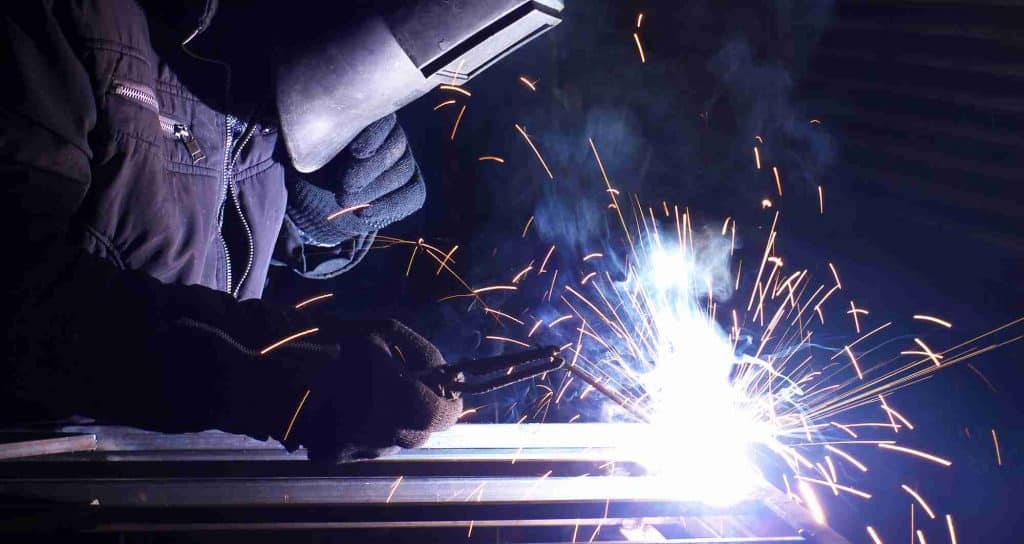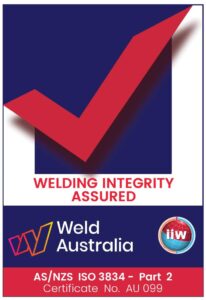Like many sheet metal terms, soldering and welding are used interchangeably. Nevertheless, while these two operations are comparable, their procedure and sub-techniques are different.
The main difference between welding and soldering is melting.
In soldering, metal producers heat up the metal to be bonded but never soften them. In welding, metal producers melt the base metal.
Soldering is most just like brazing since it uses capillary action to flow the metal into the joint until it cools and hardens. Soldering can be done within a factory or at home with a good soldering iron.
While many people use “welding” and “fabricating” interchangeably, others puzzle “welding” and “brazing.” Nevertheless, neither is entirely the case.
Both are unique metal-joining sheet metal methods within the entire sheet metal fabrication process, but each operation varies slightly. In other words, welding is a method that joins metals by melting the base metal and triggering blend, while brazing joins metals by melting and streaming a filler metal into the joint.

Table of Contents
The Huge Distinction Between Welding Soldering & Brazing
Australian General Engineering has developed a simple overview with the help of ME Mechanical, a newer online resource for mechanical engineers and engineering trainees, to explain the key differences between soldering and welding:
Welding joints are the strongest, followed by soldered joints then brazed joints. Welding requires about 6,500 degrees Fahrenheit, while soldering requires about 840 degrees Fahrenheit. Workpieces and the metal base are warmed and melted in welding. Soldering requires no heating of the workpieces.
According to ME Mechanical, “Mechanical residential or commercial properties of base metal might change at the joint due to heating and air conditioning” during a weld. In soldering, mechanical homes don’t alter at all.
Ability requirements for a welder are usually higher than a solderer. However, the heat cost is about the very same. Heat treatments are needed continuously for a weld, whereas soldering does not ever need heat treatments. Welding requires no preheating of the workpiece. However, soldering needs preheating for a high quality joint.
The Fabrication Process
According to Maker Style, “Soldering is a low-temperature analog to brazing.”
As specified by the American Welding Society, “soldering takes place with fillers (also known as solders) that melt at below 840 degrees Fahrenheit. Metals that can be soldered include gold, silver, copper, brass, and iron.”
The lead was the primary metal for this sheet metal method. Nevertheless, ecological issues are pushing the sheet metal market to lead-free options.
“The filler, called solder, melts. When it strengthens, it’s bonded to the metal parts and joins them. The bond isn’t as strong as a. bonded one.”
Flux, a chemical cleaning, and cleansing representative is used in soldering and welding to clean the metal surfaces. Flux eases solder to stream over the pieces to be signed up with.
“Soldering is also used to join electrical parts,” inning accordance with Device Style. “The joint is not necessarily strong or structural, however electrically connects the parts with conductive solder.”
In the welding procedure, the blend is triggered. Fusion is the generic sheet metal fabrication term for collaborating metals of similar compositions and melting points. A swimming pool of molten material called the weld pool is formed due to the high melting points of the workpieces.
This pool cools to form a joint that’s more powerful than the base metal, and pressure through heat might be utilized to help in weld production.
Welding likewise requires a form of shield to protect the filler metal from being infected or oxidized, which is the loss of electrons and causes iron oxide (better-called rust) to form on the metal.
The Fabrication Techniques
Types of soldering include the following:
Brazing
Hard or silver soldering
Soft soldering
Types of welding include the following:
Electric resistance welding
Electroslag welding
Flux-cored arc welding
Gas metal arc welding
Gas tungsten arc welding
Glass welding
Oxy-fuel welding
Plastic welding
Shielded metal arc welding
Immersed arc welding
The Big Distinction
In brazing and welding, fabricators add a filler metal into the joint. The filler metal can be aluminum-silicon, brass, bronze, copper, copper-silver, gold-silver, nickel alloy, or silver.
Nevertheless, the significant differences are the following:
In brazing, the filler metal has a lower melting point than the adjoining metal. In welding, the filler metal has a higher melting point, like soldering.
In brazing, producers don’t melt the base metal. In welding, producers melt the base metal and each workpiece together.
Brazing utilizes capillary action, and welding uses a combination.
The Fabrication Process
In the welding process, the combination is triggered. The blend is the generic fabrication term for joining together metals of comparable compositions and melting points. A pool of molten material called the weld pool is formed due to the high melting points of the workpieces.
This swimming pool cools to form a joint that’s stronger than the base metal, and pressure in the form of heat might be utilized to help in weld production.
Welding likewise needs a type of shield to secure the filler metal from being contaminated or oxidized, which is the loss of electrons and triggers iron oxide (better referred to as rust) to form on the metal.
In the brazing procedure, the filler metal streams into the joint in between close-fitting parts by capillary action, which is the capability of a liquid to stream in narrow areas without the assistance of or in opposition to external forces like gravity.
The filler metal is then brought a little above its melting point while protected by a flux, a chemical cleaning and cleansing representative. It then streams over the base metal (likewise called wetting) and is subsequently cooled to sign up with the workpieces together.
The Fabrication Methods
Welding and brazing are sheet metal methods, but sub-techniques of each operation exist. Types of brazing include the following:
Torch Brazing
Heater brazing
Silver Brazing
Braze welding
Cast-iron welding
Vacuum Brazing
Dip Brazing
Kinds of welding consist of the following:
Electric resistance welding
Electroslag welding
Flux-cored arc welding
Gas metal arc welding
Gas tungsten arc welding
Glass welding
Oxy-fuel welding
Plastic welding
Protected metal arc welding
Immersed arc welding
The Advantages Of Brazing
Welding is a more typical sheet metal strategy, but brazing shouldn’t be marked down as a trusted procedure.
The most significant advantage to brazing is that sheet metal fabricators can join together comparable or different metals and still produce a strong joint. In welding, metals of similar temperatures and compositions should be used for a finished item, which does produce more great joints.
Brazing likewise enables tighter control, produces a cleaner joint than welding without the need for secondary ending up, and produces less thermal distortion than welding. In brazing, a uniform temperature level is used, unlike welding which uses various temperatures.
Brazing is likewise quickly versatile for mass production. The sheet metal strategy enables easy automation because the task criteria are hardly ever differed.
Sheet metal fabrication methods can be a confusing principle to wrap your head around because a lot of operations exist. If you need help in finding out every metal technique, click on this link to download our cheat sheet.

